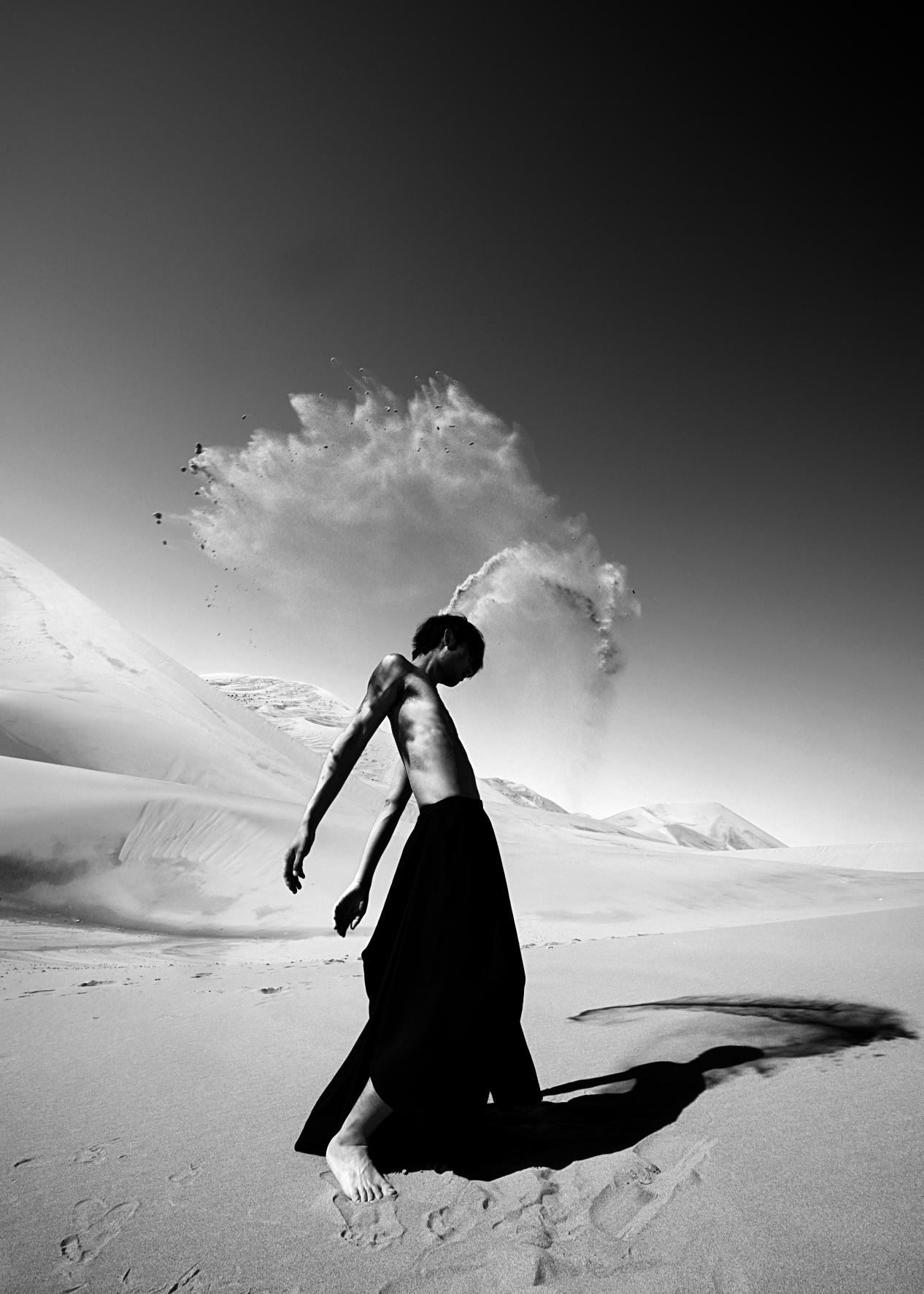The recent launch of Mo Xiaojun’s photographic series, Lost, has garnered significant attention. Comprising six conceptual images, the works are characterized by its restrained and concise style, constructing its visual structure primarily around figures, light and shadow, and a sparse use of props. Centering on the theme of “lost”, the works avoid grand narratives, focusing instead on the intricate inner psychological states of individuals grappling with the pressures of modern reality.
From a visual perspective, the works employ a subdued color palette, predominantly black and white or desaturated tones, to eliminate the distraction of environmental details. This deliberate choice directs the viewer’s attention to the subjects’ postures, gazes, and subtle expressions. The figures remain largely static, their movements minimal; yet through details such as bodily inclination, hand gestures, and the direction of their gaze, varying degrees of hesitation, stasis, or contemplation emerge. This restrained approach keeps the works from becoming overly emotional while generating a powerful sense of empathetic identification.
The series forgoes elaborate sets, instead constructing its scenes with ordinary objects like wooden chairs and mirrors. Serving as a crucial element within the frame, the mirror creates an interactive relationship between the figure and themselves, at once demonstrating self-observation and suggesting a blurring of boundaries between self and external world. This design allows viewers to perceive a symbolic representation of “inner-outer conflict” within the frame, deepening their understanding of the works’ exploration of psychological states.
In contrast to much contemporary imagery, the Lost series refrains from employing special effects to dramatize emotions or using extreme gestures to depict anguish. Instead, it adopts a low-stimulus approach, rendering emotional states that feel closer to our genuine lived experience. The figures are not portrayed in the throes of extreme passion, but rather in a suspended “pause”, as if captured at a midpoint between thought, hesitation, and uncertainty. This methodology avoids exaggerated sentiment while underscoring the universality of the theme.
Regarding its creative intent, the series leans toward presenting psychological phenomena through an “observational lens”, rather than delivering definitive social conclusions. It deliberately refrains from moral or value judgments, instead employing a quasi-documentary framework to record a common yet often overlooked psychological experience. This approach grounds the works in a tangible reality, allowing viewers to easily draw connections from their own lived experiences. By relating the images to their personal contexts, the viewers are prompted to reflect on their own psychological responses to pressure.
In terms of composition, the artist maintains a stable frame structure, avoiding dramatic tilts or disjointed arrangements to achieve a cohesive and unified aesthetic. The interplay of light and shadow is employed in a direct manner. A steady, consistent light source is used to delineate the contours of the figures, rather than to create overtly theatrical effects. This clear visual guidance allows viewers to readily grasp the works’ intent.
Overall, through its modest and restrained visual language, the Lost series offers a poignant portrayal of the modern individual’s psychological state under pressure. The value of the works lies not in emotional exaggeration, but in its calm perspective, which effortlessly invites viewers into a space for personal reflection. The works demonstrate a high degree of finish and appropriate attention to detail, constituting a series of photographic images with real-world observational significance.


